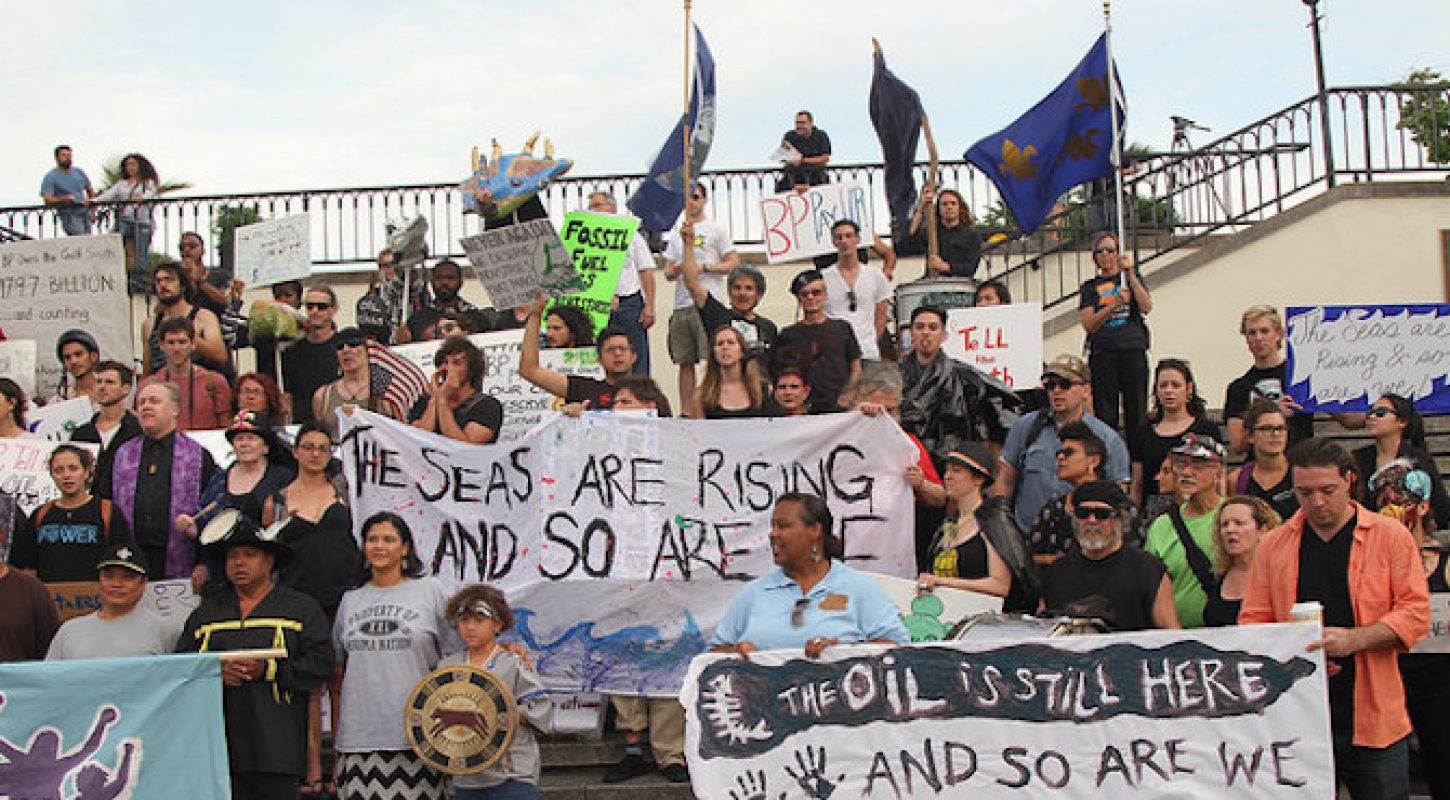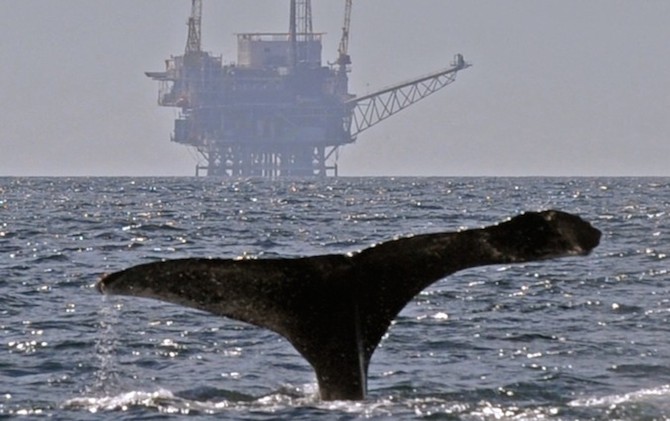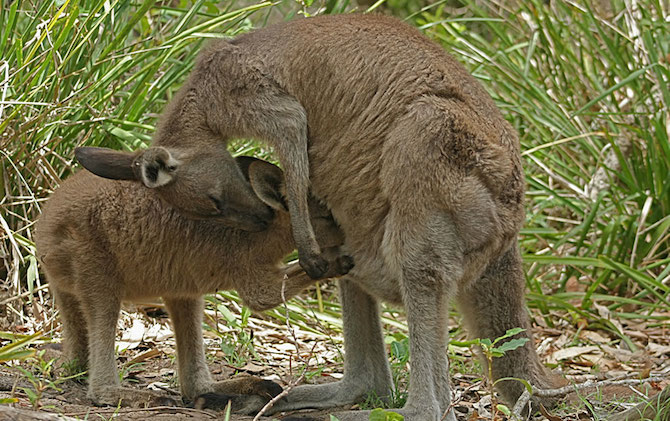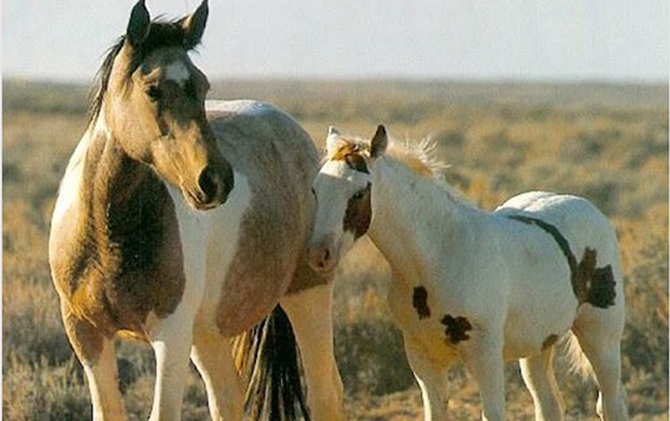It’s easy to forget about this oil spill that occurred 6 years ago, But the settlement was just addressed this March 2016!! Which seems insane! So much research and restoration has yet to be done, so we need to stay on top of it and make sure all of the restoration dollars get into the right hands and projects. LETS DO THIS! Over to Raleigh!
–
On April 20, 2016, Gulf residents and the nation will mark 6 years since the beginning of the BP disaster. Many of you probably remember watching the videos of oil gushing from the sea floor, or seeing pictures of pelicans covered in BP’s oil, or reading about frantic attempts to stop the flow of oil into the Gulf. However, six years later, as the nation’s eyes have turned elsewhere, you may not be as familiar with the ongoing impacts of the BP disaster and the oil and gas industry in the Gulf of Mexico.

An aerial shot of the spill on May 27, 2010
BP’s Impacts: BP’s oil is still in the Gulf and still impacting the region’s people and environment. Recent studies have raised serious questions about the long-term health of the Gulf of Mexico in the wake of the BP drilling disaster.
Sick and dead dolphins continue to wash up on our shores. A November 2015 study documented high rates of reproductive failures in bottlenose dolphins in heavily oiled Barataria Bay, Louisiana, linking these problems to BP’s oil. Other studies have found a 10 million gallon “bath mat” of oil and a reduction in marine life in the area surrounding the BP blowout.

Gulf Restoration Networks’s Scott Eustis holding a “tar ball” (weathered oil mixed with sand and other elements) discovered on the beach in Grand Isle, LA on November 14, 2015. 6 years later, remains of BP’s oil continue to wash up on the shore and persist in the Gulf’s environment.
Ongoing Oil and Gas Impacts: Although the BP disaster was one of the latest and greatest environmental threats to the Gulf, this region has long been an energy sacrifice zone.
Louisiana loses a football field worth of coastal wetlands every hour, and these coastal wetlands are essential natural storm protection for our communities. Much of Louisiana’s catastrophic coastal wetlands loss can be linked to oil and gas development, particularly the thousands of miles of pipelines and canals that cut through the coast.
Nearly every time Gulf Restoration Network flies over Louisiana’s coast, we document leaks and spills. In fact, the Coast Guard’s National Response Center receives around 1,500 oil spill notifications for Louisiana each year, with an average volume of 330,000 gallons spilled annually. (This is insane that this is allowed! – alicia)
Restoring the Gulf: Restoration dollars are beginning to flow to the Gulf– including over $1 billion from the early Natural Resource Damages Assessment (NRDA), the legal process by which responsible parties are held accountable for damages to the environment from an oil spill. But it’s going to be a long road to restoration. In 2012, Congress passed the RESTORE Act, which ensures that 80% of BP’s Clean Water Act civil fines will come back to the Gulf for restoration. This month, a federal judge finally approved an $18.7 billion universal settlement covering Clean Water Act fines and other penalties, but the funds from this settlement won’t be disbursed until 2017.
$18.7 billion seems like a lot of money, but is it a fair and just amount? Cynthia Sarthou, Executive Director with Gulf Restoration Network comments, “The needs of the Gulf are urgent and by settling this case we avoid years or even decades of legal appeals… Although $18.7 billion is a significant sum, we have serious concerns about how much of this money is actually going to be allocated towards restoring the Gulf’s environment and impacted communities. The funds from this settlement provide a once-in-a-lifetime opportunity to repair the Gulf in the wake of the BP disaster and make our coasts and communities stronger and more resilient for future generations. We must not squander this opportunity.”
Despite this money put aside for restoration, politicians are already looking to spend BP restoration dollars on their pet projects. In February, GRN won a major victory when a federal judge barred the state of Alabama and NRDA Trustees from spending $58.5 million in early restoration money on a beachfront convention center until further analysis is completed. This is a precedent-setting victory, but we must remain vigilant to ensure that future funding flows to the best and most deserving restoration projects.
With the recent settlement, we now know how much money will be coming to the Gulf and when it will be coming. But that is just part of the battle. Over the coming years, politicians and bureaucrats will be making monumental decisions about how to spend these billions of dollars, and the public is going to need to push hard to make sure the process is transparent, and our leaders are held accountable for the restoration of the Gulf.
We need your help to ensure that BP’s dollars go to real restoration of the Gulf – click here to join Gulf residents in urging decision makers to invest BP dollars in actual restoration of the Gulf’s coasts and communities. Lend your voice on social media to spread awareness and educate your family and friends!
For more information, check out Gulf Restoration Network’s BP Disaster page and spread the word!
Raleigh Hoke is the Campaign Director at Gulf Restoration Network, a 22 year old nonprofit that empowers people to protect and restore the health of the Gulf of Mexico. Read more and learn how to get involved at HealthyGulf.org.
Photo Credit: Healthy Gulf
The California Coastal Commission is meeting this week in Ventura. Below…




